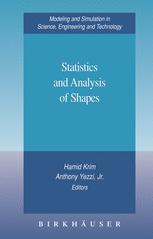

Most ebook files are in PDF format, so you can easily read them using various software such as Foxit Reader or directly on the Google Chrome browser.
Some ebook files are released by publishers in other formats such as .awz, .mobi, .epub, .fb2, etc. You may need to install specific software to read these formats on mobile/PC, such as Calibre.
Please read the tutorial at this link: https://ebookbell.com/faq
We offer FREE conversion to the popular formats you request; however, this may take some time. Therefore, right after payment, please email us, and we will try to provide the service as quickly as possible.
For some exceptional file formats or broken links (if any), please refrain from opening any disputes. Instead, email us first, and we will try to assist within a maximum of 6 hours.
EbookBell Team

5.0
90 reviewsThe subject of pattern analysis and recognition pervades many aspects of our daily lives, including user authentication in banking, object retrieval from databases in the consumer sector, and the omnipresent surveillance and security measures around sensitive areas. Shape analysis, a fundamental building block in many approaches to these applications, is also used in statistics, biomedical applications (Magnetic Resonance Imaging), and many other related disciplines.
With contributions from some of the leading experts and pioneers in the field, this self-contained, unified volume is the first comprehensive treatment of theory, methods, and algorithms, available in a single resource, without the typical quagmire of vast information scattered over a wide body of literature. Developments are discussed from a rapidly increasing number of research papers in diverse fields, including the mathematical and physical sciences, engineering, and medicine.
The initial chapters explore the statistical modeling of landmarks while subsequent chapters address the probabilistic modeling of entire shapes. The latter part of the book, with the exception of the last two chapters, concentrates on case studies as well as implementational and practical challenges in real systems. Extensive illustrations throughout help readers overcome the sometimes terse technical details of the geometric and probabilistic formalism. Knowledge of advanced calculus and basic statistics and probability theory are the only prerequisites for the reader.
Statistics and Analysis of Shapes will be an essential learning kit for statistical researchers, engineers, scientists, medical researchers, and students seeking a rapid introduction to the field. It may be used as a textbook for a graduate-level special topics course in statistics and signal/image analysis, or for an intensive short course on shape analysis and modeling. The state-of-the-art techniques presented will also be useful for experienced researchers and practitioners in academia and industry.